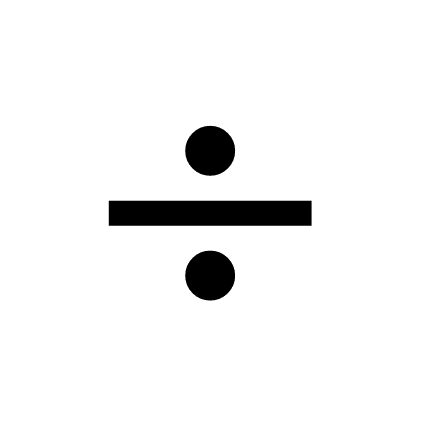Quick access
 Operations - Decimals and Rationals
Operations - Decimals and Rationals
Introduction
In this introduction we will see the vocabulary and the calculation rules used for all the set of numbers. This may seem complicated at first, but for each set (see Quick Access above) we will explain in detail and with examples how to do it. This general vision will then become super practical to quickly consult all the rules, the vocabulary and what each set represents.
Let's start with the big picture, how are the first sets of numbers categorized?

N : A natural integer is a positive and "without comma"
number such as 0, 1, 2, 3 ...
Z : An integer is either a positive or
negative number and "without comma" such as
...-3, -2, -1, 0, 1, 2, 3...
Q : A rational number is a number which can be written as a fraction such as
1/3, -2/7 etc.
R : Some numbers like √2 or π are not rational.
The set of reals completes the set Q.
Priorities (order) of operations
Like the rules (below), the operational priorities are true all the time. We will have to follow them each time we have a calculation to perform :
1. Calculations in parentheses 2. Powers 3. Multiplication and Division 4. addition and subtraction 5. In case of operations with the same priorities, it is at our convenience (we do as we want).
Some examples
Calculation rules and vocabulary
This vocabulary and these calculation rules will follow you until the end of your studies and will remain unchanged. It may seem a little heavy at first, but we will use it daily in math whatever the level of study. Let's go:
Division
We never divide by 0 !
Neutral element
we call neutral element a number that does not change the result of an operation.
The addition has a neutral element, the null element: a + 0 = a The multiplication has a neutral element, the unit : a × 1 = a
Inverse number
We call inverse of the number a (not zero) the number noted a-1 or 1/a that verifies : $$\pmb{a * \frac{1}{a} = 1}$$ or $$\pmb{a * a^{-1} = 1}$$
Opposite number
We call opposite of the number a the number noted –a that verifies : $$\pmb{a + (-a) = 0}$$
On a graduated axis, two opposite numbers are symmetrical with respect to the origin (0).

Associative operation
An operation is associative if the result is invariable whatever the grouping of consecutive terms. In other words if the operator (noted ❄︎) has the following properties regardless of the elements a, b and c: $$(a ❄︎ b) ❄︎ c = a ❄︎ (b ❄︎ c)$$

The addition is associative : (a + b) + c = a + (b + c) The multiplication is associative : (a × b) × c = a × (b × c)

Attention: Subtraction and division are not associative!
Commutative operation
A commutative operation is an operation which allows to change the order of terms without changing the result.
The addition is commutative : a + b = b + a The multiplication is commutative : a × b = b × a

Mathematically, this would be written: $$ \forall x,y\in \mathbb{R} : x+y = y+x$$ $$\forall x,y\in \mathbb{R} : x×y = y×x$$
Attention: Subtraction and division are not commutative!
Distributive operation
Multiplication is distributive on addition. This translates as follows: $$\pmb{a * (b + c) = (a * b) + (a * c)}$$

The image above is a visual demonstration. Indeed, we can see that the area of the total rectangle "c * (a + b)" is equal to the sum of the two interior areas "(c * a) + (c * b)".
Stable operation
In mathematics, we say that a part A of a set E is stable (or closed) for an operation defined on E if this operation, applied to elements of A, produces an element of A.
For example, the set N (natural integers or positive integers) is stable for addition and multiplication: this means that if I add or multiply any two natural integers, the result will still be a natural integer.
N is not stable for subtraction (or division): for example 2 - 3 = -1, which is not in N.
Summary sheet
|
|
Voilà ! We now know the rules of the game for performing mathematical calculations. We can jump into practical details for each set of numbers (cf. Quick Access).

 Operations -
Whole Naturals
Operations -
Whole Naturals
 Operations - Integers
Operations - Integers
 Euclidean division
Euclidean division
 Operations -
Fractions
Operations -
Fractions